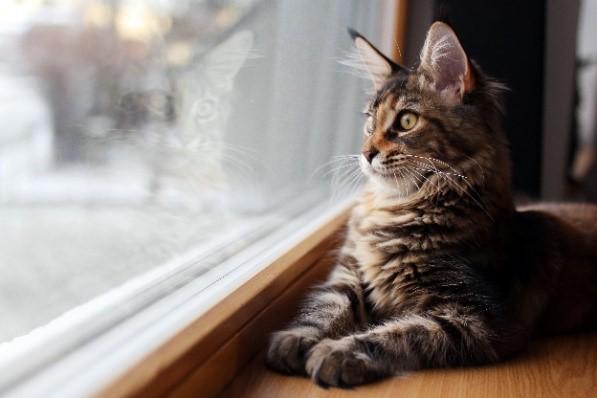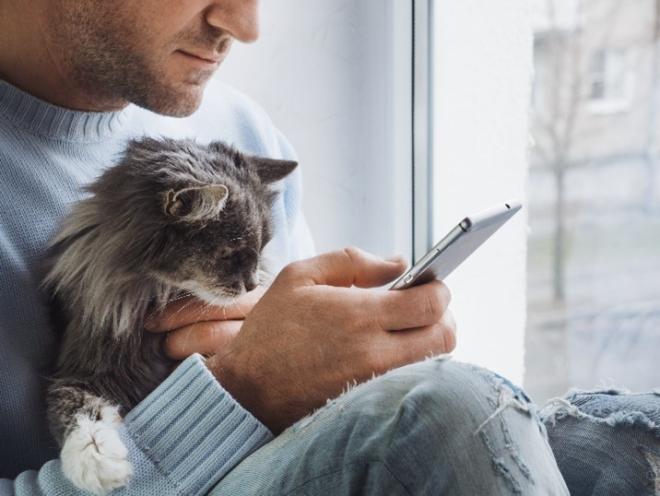What Is Diabetes in Cats?
It’s true, diabetes isn’t just for humans. Cats, dogs, and other animals can develop this chronic disease. Diabetes mellitus is a metabolic disorder where your cat’s body cannot properly produce enough or respond appropriately to the hormone insulin. This results in persistently elevated levels of blood sugar (glucose) called hyperglycemia, which can cause various symptoms and lead to other conditions. Left untreated or poorly treated, diabetes can result in life-threatening complications.
Diabetes occurs in cats in 2 forms:
Type 1 (insulin-deficiency diabetes) is when the cat’s body isn’t producing enough insulin. A cat with this type of diabetes needs daily insulin injections to replace the missing insulin it’s body would normally produce.
Type 2 (insulin-resistance diabetes) is when the pancreas is producing some insulin, but the cat’s body isn’t utilizing the insulin as it should. This is the most common type of diabetes in cats.
The main goals in the management of diabetes include restoring normal blood glucose levels, controlling weight loss, minimizing thirst and urination, and avoiding hypoglycemia. The following are therapy options for cats living with diabetes.
SGLT2-i therapy
In 2023, a new class of therapy called sodium glucose co-transporter 2 inhibitors (SGLT2-i) was introduced to help treat naive diabetic cats. This therapy works independent of insulin and helps rapidly restore normal glucose levels in most cats. Click here to learn more about one of these oral medications.
Insulin therapy
Insulin injections have historically been the primary treatment for most diabetic cats. The type, dosage, and frequency of insulin administration will depend on the individual cat’s needs and response to treatment.
Dietary therapy
Your cat may lose weight even while eating normal, or increased, portions of food. Your cat is unable to efficiently convert nutrients from her food. Feeding a balanced, low-carbohydrate diet is crucial for managing diabetes in cats. High-protein, moderate-fat diets with controlled carbohydrate content can help regulate blood sugar levels.
Customized care
Working closely with your veterinarian is crucial for diabetes management. Your vet can provide guidance on treatment protocols, insulin adjustments, dietary recommendations, and overall monitoring of your cat’s health.
How to Monitor Blood Sugar in Cats
Regular monitoring of a cat’s blood sugar levels may be crucial for effective diabetes management. The primary method of monitoring blood sugar in cats is through glucose testing, which can be performed at home or by a veterinarian.
The most common method of blood monitoring at home involves using a glucometer and obtaining a blood sample from the cat’s ear. To obtain a blood sample, a small, gentle prick is made on the selected area, and the blood is collected onto a glucose test strip, which should be already inserted into the glucometer to provide a digital reading of the cat's blood sugar level. Devices placed on the skin can continuously monitor glucose on demand using an app.
Another test that can be done to assess a patient's blood glucose over time is fructosamine, which provides an indication of what the blood glucose values were over the previous 2-3 weeks.
Diabetic Ketoacidosis (DKA) in Cats
Diabetic ketoacidosis (DKA) is a life-threatening complication of diabetes mellitus that occurs when there is not enough insulin in a cat’s body to control glucose levels. Without insulin, the body cannot process or use glucose properly. When glucose levels are too high, the body creates ketone bodies from fat as an emergency source of fuel. Large amounts of ketones cause severe dehydration and lead to secondary health complications that require speedy and aggressive medical therapy.
At home monitoring of DKA is possible with Ketone test strips. To complete the test, a fresh urine sample can be obtained using clean, non-absorbent litter or by using a non-absorbent container to catch a midstream urine sample. A ketone test strip is then inserted into the urine sample. The colour change
of the test strip can then be compared to the provided color chart to indicate the presence and concentration of ketones in the urine.
It is important to note that while urine ketone test strips can provide an indication of ketone presence, a veterinarian consult is recommended so they can can perform a comprehensive evaluation and confirm the presence of DKA in cats.
Signs of Diabetic Ketoacidosis in Cats
Some common signs of DKA in cats include:
• Vomiting, loss of appetite, and weight loss
• Increased thirst and urination
• Rapid and labored breathing
• Lethargy, weakness, and depression
• Distinctive odor on a cat’s breath
• Disorientation, coma, and seizures
Remember, DKA is a medical emergency, and immediate veterinary attention is necessary to provide intensive care, fluid therapy, insulin administration, and correction of electrolyte imbalances.
Late-Stage Feline Diabetes
Late-stage feline diabetes refers to an advanced and severe state of the disease where the cat’s blood sugar levels are consistently high and difficult to control. The risk of complications such as DKA increases in late-stage feline diabetes.
Cats in late-stage diabetes often require more aggressive treatment and close veterinary monitoring. Prompt veterinary intervention is necessary to stabilize blood sugar levels and address any potential complications.
- Weight loss due to the body not being able to properly utilize glucose as an energy source
- Excessive thirst and increased urination due to the kidneys’ attempt to eliminate excess glucose from the bloodstream
- Dehydration due to increased fluid loss through frequent urination
- Weakness and lack of interest in their surroundings
- Poor coat condition, recurrent infections, and slow wound healing
- Diabetic neuropathy may cause weakness or paralysis in the hind legs
Key Takeaways
Diabetes mellitus is a chronic disease.
Diabetes mellitus is a chronic disease that affects how your cat’s body regulates blood sugar levels effectively to convert food into energy. Left untreated or poorly treated, diabetes can lead to life-threatening complications. Risk factors for diabetes mellitus include:
- Obesity
- Age: cats over 6 years of age are at grater risk
- Physical inactivity
- Gender: male cats tend to be more prone to diabetes than females
- Certain breeds of cats have a predisposition to diabetes: Burmese, Maine Coon, Russian Blue, and Siamese
- Endocrine diseases, chronic bowel upset, or pancreatitis
- Use of hormonal therapy, or medications such as prednisolone
Early detection is crucial.
Early detection and treatment are keys to successfully managing diabetes in your cat. Talk to your veterinarian if you notice any of following signs of diabetes:
- Increased urination
- Increased drinking
- Increased appetite
- Standing with weight on heels or ankles instead of paws
- Weight loss despite increased food intake
Work with your veterinarian to create a treatment plan.
Your veterinarian is key in creating and implementing a treatment and management plan that may
Author: Kathleen Buffington
Kathleen “Kat” Buffington graduated from the University of Georgia’s School of Agriculture with a degree in biology. She began an over decade-long career in the animal health industry where she’s pursued her passion: training & educating others in all aspects of animal health. Outside of her career, she enjoys spending time with her friends & family, including 2 cats & 2 dogs.




